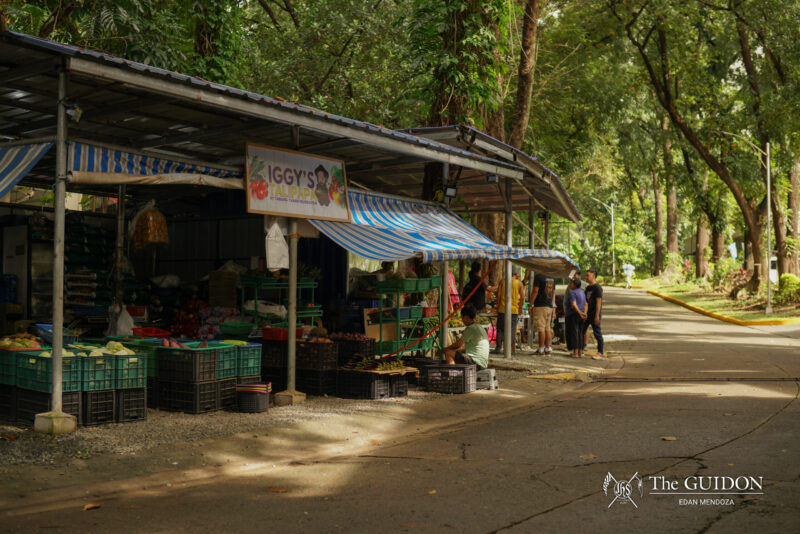In the misty mountain ranges of the Cordilleras, a coffee farmer steps out of his home to greet the crack of dawn. The air is rich with the scent of dew and fresh vegetation. After more than six months, the big cherry harvest has arrived. And as the farmer heads for the plantations, others emerge from their abodes to join him. The day is spent picking cherries of select ripeness, while being careful not to disturb the unripe ones.
In such regions like the Cordilleras where the weather isn’t extreme, coffee plantations thrive under sunlight and regular watering. The soil is kept moist but well drained to ensure consistency in the coffee beans. After a morning of cherry-picking, the farmers load baskets full of cherries into the guardiola, a mechanical dryer which eliminates moisture and prevents beans from turning sour.
This, however, is only the first step to brewing a good cup of coffee. The truth is, growing coffee beans is no ordinary task that just anyone can do on a whim. To ensure that there is fair trade, a farmer has to consider building good ties with buyers of homegrown beans.
Aside from catching up to the average coffee drinker’s expectations of high quality coffee, the local coffee industry also has the responsibility of educating local farmers and supporting their lands, next to creating a future where homegrown coffee becomes a staple.
Making waves
Within the Katipunan area, there are a number of coffee shops that are frequented by Ateneans. Though many Ateneans subscribe to coffee as a vital part of their day, there might be a lot that the average Starbucks-loving Atenean doesn’t know about their caffeinated beverages.
There are three waves of the coffee trend. “First wave coffee started with Folger, and [in the Philippines, with] big [brands] like Nescafe,” says JP Gomez, a co-owner and barista of Colloquial Coffee. First wave coffee abandons taste and quality for convenience and mass production by wrapping the “coffee shop experience” in small, ready-to-use packets.
On the other hand, second wave coffee is marked by an emphasis of the social aspect of drinking coffee, or the “coffee shop experience.” By mass producing coffee this way, the quality of the coffee degrades and according to Gomez, this is where shops such as Starbucks Coffee, The Coffee Bean and Tea Leaf, and Bo’s Coffee belong.
The beans are the focal point with third wave coffee. “From the growing process up until the brewing and consuming of the coffee, third wave coffee shops [create] a more holistic or well-rounded coffee experience,” says Gomez.
Explaining that three-in-one coffee brands such as Nescafe actually offer a mix of local Arabica and Robusta beans, Cow and Chicken restaurant co-owner Sam Beltran shares that Filipino customers think that exclusive homegrown coffee on the other hand, isn’t of high quality.
In the case of homegrown coffee in the Philippines, creating awareness among Filipino coffee drinkers is an imperative, because “nobody actually brings local coffee beans front and center, and says ‘we can make special quality coffee out of these beans,’” notes Beltran.
From bean to beverage
A good batch of coffee beans has a musky-malty scent, at least according to Junko Flores, a former Starbucks barista who is now a co-owner of Cow and Chicken. Making sure that there are no cracks, the beans must have a perfectly symmetrical shape to ensure that there are no deformities.
The beans are then ground into the right size depending on the roast, before being tamped or compressed. In the espresso machine, the temperatures and colors of the coffee are adjusted to the barista’s liking. A fresh cup of coffee is ready to be served.
But even before the beans became a beverage, they have made their way from the hands of coffee farmers. Aside from ensuring that their customers drink the best local coffee, Cow and Chicken’s owners find it their responsibility to enlighten the Cordillera farmers – their trading partners – about the coffee roasting process.
“Kasi ‘yung magagaling mag-roast, nandito sa Manila. Hindi yung farmers (Those who roast well are here in Manila, not the farmers),” says Flores. And this is educating the farmers must be prioritized: to help them gain the same skills Manila roasters have.
With proper roasting knowledge, farmers can sell their beans at higher prices instead of relying on third-party roasting establishments. Aside from giving farmers more control over their harvests, proper knowledge can help the farmers’ products gain more traction in the local market.
Another problem for local coffee farmers is the lack of attention they receive from the government. “It’s one of the reasons why we can’t label [Filipino coffee as] specialty coffee. Kulang pa ‘yung (We’re still lacking) funding ng farmers to shift to being specialty,” says Cow and Chicken co-owner Mark Tating.
As a response to this, coffee experts from the United States and local private sectors took it upon themselves to improve the quality of Filipino homegrown coffee and the skills of the farmers through different projects, the Inquirer reports.
Still, a steady development is needed to achieve specialty coffee. In Cow and Chicken’s and Colloquial Coffee’s cases, their owners have started by creating awareness amongst their customers and maximizing the potential of local beans. “[We go local] not just for the concept of going local, but because of the widely available ingredients here,” says Tating. “[We use] what we have.”
One cup at a time
Amidst the slow but steady rise of homegrown coffee, commercial coffee is still a staple among consumers. A big reason for its demand is its familiarity to the public. Artisanal coffee shops, on the other hand, take advantage of their unique concept to entice customers to patronize their products. “Aside from using our local coffee, we also incorporate other flavors,” says Flores, saying that they sweeten their coffee with panocha syrup, a Batangueño delicacy.
The goal of the homegrown coffee industry is to show the quality of each individual coffee shop and to raise awareness that local coffee can actually taste good. However, keeping up with well-known commercialized brands might already be a difficult feat on its own. “It’s hard to go head-to-head,” says Tating. “So what we’re trying to do is to maximize our coffee [through different items on our menu].”
Gomez also says that providing consumers with something that sets your coffee apart is an important aspect. This can be seen in Colloquial Coffee’s and Cow and Chicken’s menus, where they serve their zesty “Pulp Fiction” coffee and their nostalgic Chocnut Coffee, respectively.
Due to the fastidious nature of their trade, their target market becomes the lifeblood of the entire operation. Due to a higher regard for commercialized coffee, homegrown coffee has become a trivialized product to the general public. However, Gomez assures that when regulars come back, they are often more interested. Through artisanal coffee shops, knowledge and appreciation for local coffee can be heightened.
In a nutshell, homegrown coffee is a relatively fresh and undervalued product. But through the continuous support and promotion for the local coffee trade, it’s possible for local coffee to one day become a staple for coffee aficionados, caffeine junkies, and even your average Joe.







